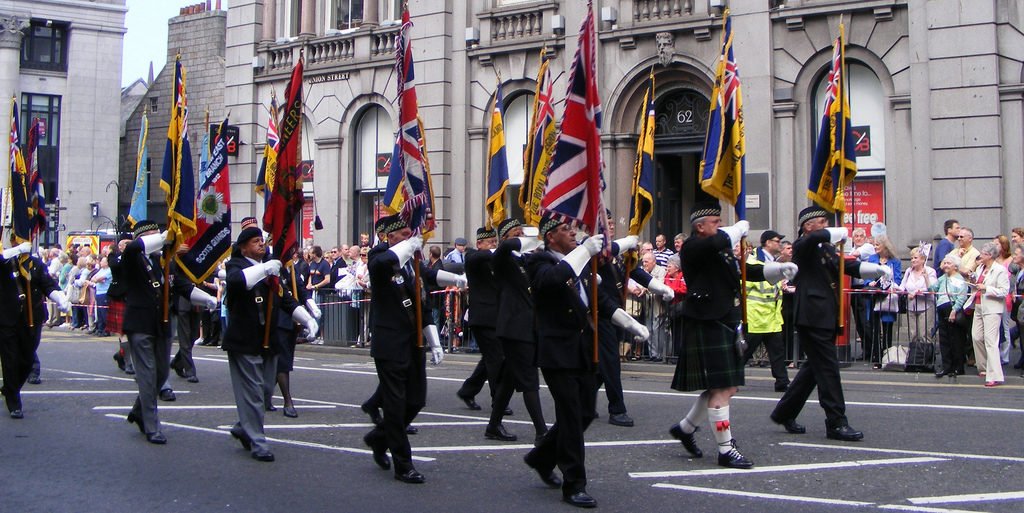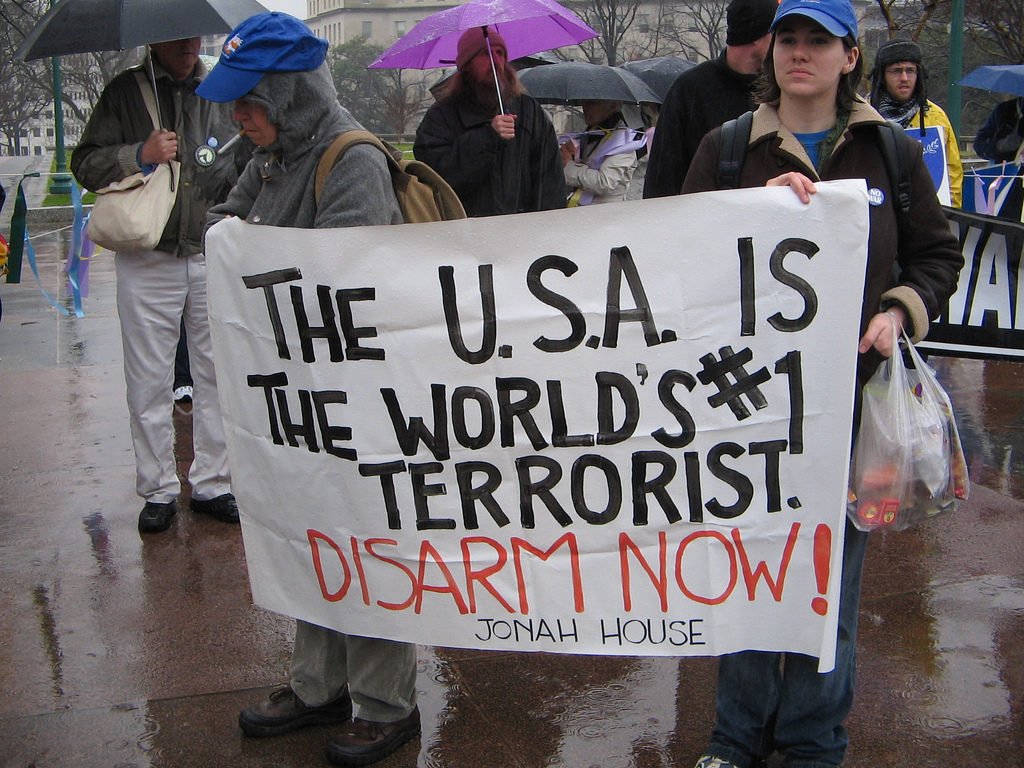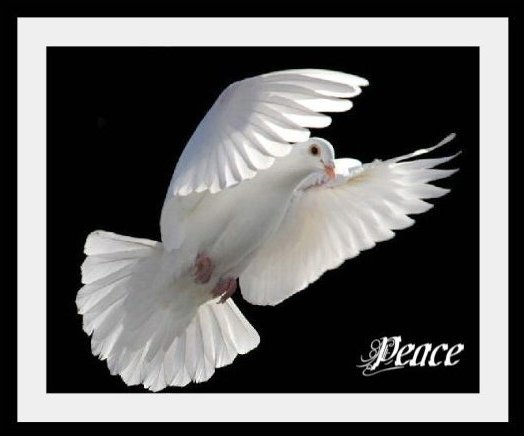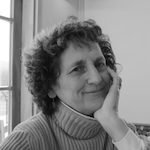
I remember that day in sixth grade at Gap Elementary School with painful clarity. Mrs. Groff turned from the board where she had written in her careful cursive the names of the countries involved in The War—seemed pretty much the whole world—and she asked, “How many of your fathers fought in the war?” She might as well have asked, “And how many of your fathers stayed home and milked cows while brave men went off to foreign lands to fight for freedom?” That’s how I heard her question, and I wanted to disappear.
It was Veteran’s Day. We were the first wave of “baby boomers” born after the soldiers returned home at the end of World War II. When someone talked about The War, no question which one it was.
Although hands went up all over the classroom when she asked her question, mine was not the only one that stayed down. We had eight Amish students in my class, and they did not have soldier fathers either. And I was not the only student from a Mennonite family.
I copied down the list of countries in case we needed to know them for the test. I could memorize lists. I had already memorized all the books of the Bible, Old and New Testaments, including the ones you never heard about like Nahum and Habakkuk. A list of countries wouldn’t be any trouble.
If someone asked me for a list of things that embarrassed me, I could have given you the list easily, without any memorizing. It was a list which would grow longer in Junior High and High School, but in sixth grade, it would have included handmade dresses, and hair pulled back into tight French braids—with no hope of bangs. In fall, I was embarrassed when my hands were stained by black walnuts we picked up under the trees on the fence row by the thicket, stains no amount of tar soap could wash off. And there were so many brothers and sisters, every two years, twelve of us. Teachers would look up from the list when they saw the name, as if they were thinking, “Another Hostetter.” And now I could add to my list of embarrassments a father who had not gone to war.
Maybe no one was looking at me that day in sixth grade, but I was certain the only thing anyone was paying attention to was my hand not being raised. It was as if those of us who did not raise our hands were painted a cowardly yellow, as some of the Mennonite churches had been by vandals during the war. I wasn’t around, but my mother said the churches were vandalized “because of the church’s peace testimony,” and the way she said it, it was as if she thought it was a good thing. How could suffering or being embarrassed for your beliefs be something you’d want?
It wasn’t the first time our church’s troublesome “peace testimony” caused me problems. It had come up with the safety patrol too, an organization that, as far as I could tell, had no connection to war whatsoever. We were allowed to participate in the safety patrol, which had the weighty responsibility of keeping the other students orderly as they went back into the school after recess or a fire drill. I proudly wore my white safety patrol sash, the diagonal band holding the blue pin when I was chosen to be captain.
The problem was that students in the safety patrol were invited to participate in parades in our small town, and members of my family were not allowed to have anything to do with parades. Participating in parades, or attending them, was non-negotiable.
“Parades are about glorifying the military,” Mother said. “And you don’t need to be marching down the street with those half-dressed girls either.”
Even beyond sixth grade, I made an uneasy peace with the pacifism that was part of my heritage, mostly hoping no one would notice my family’s lack of patriotic fervor. No flags flew at our farm on the hill overlooking Gap on patriotic holidays. No flags adorned the graves of generations of ancestors buried in Hershey’s Mennonite Church Cemetery. None of my eight brothers served in the military, nor had any of my uncles. Some of them participated in alternative service as conscientious objectors, working in hospitals, building trails in national parks, helping rebuild towns destroyed by the war in Europe.
Often on our way to visit Aunt Mabel and Uncle Clarence, who lived a few farms away, we drove by the VFW building across from Lengacher’s Cheese House on Route 30. There were almost always cars and trucks in the VFW parking lot, but we seldom saw anyone going in or out. I always wondered what went on at the VFW and once asked my father. He said, “They probably do a lot of drinking.”

The peace testimony interfered again when, in my senior year of high school, I won the DAR Good Citizens Award.
The day I heard I was chosen, I hurried home to tell my mother.
“Guess what, I got picked to be the DAR Good Citizen. And you’ll be invited to the award lunch at the Iris Club.”
“I don’t think anyone in this family is a Daughter of the American Revolution,” she said.
I hadn’t considered what DAR stood for, choosing to focus on the “good citizen” part, and especially the award part, which meant money.
“It’s just the name of their group,” I said. “It doesn’t mean anything.”
My mother, standing over the sink in her long faded cotton dress and apron, stopped peeling potatoes and looked at me.
“Of course it means something.”
I spread the red-checked tablecloth on the kitchen table, smoothed it.
“It’s a bunch of women who want to give an award to a student they think made a difference, and my teachers picked me. That’s all. I thought you’d be happy.”
“I’m not saying they don’t do some good things. But they’re in the group because they want to glorify war.”
She put the potatoes on the stove, turned on the burner.
“I won’t keep you from going to get your award,” she said, “but I don’t think I’ll be having lunch at the Iris Club with the DAR. They’re not my people.”
I knew I would be going to the luncheon alone. I couldn’t change her mind, although I considered saying something like, “When all the mothers get introduced, I’ll tell them I’m an orphan.” I was allowed to go to the ceremony and I knew it was the most I could hope for. I don’t remember what was served at The DAR luncheon at the Iris Club, but I’m fairly certain I was the only Mennonite among the students being honored.
As a child, it seemed to me most of the people considered heroes had at some time worn a military uniform. Because of its strict pacifist beliefs, the Mennonite Church understandably did not have any heroes in uniforms. What we had instead was an abundance of martyrs, a whole book of them.
No book in our living room bookcase other than the Bible was treated with more reverence than a book called The Martyrs’ Mirror, with page after page of stories and illustrations about all the people in the history of our church tortured and killed for what they believed. The book was as big as the Family Bible, and the illustrations showed burnings, beheadings, hangings and other brutal and gruesome deaths, hundreds of pages. It was not really a children’s book, but we looked at it often. I found the book, especially the vivid illustrations, awful and fascinating. All the ways people could be tortured and killed. But they were martyrs, not heroes.
One especially compelling story in the book was about a martyr named Dirk Willems. He was part of a group called the Anabaptists, who in 16th century Europe rebelled against the beliefs of both Catholicism and the Protestant Reformation. The Mennonites evolved from that group. Everyone hated the Anabaptists, it seemed, and they were persecuted without mercy. Dirk Willems was in prison for his beliefs, which no amount of torture would make him renounce. He escaped and fled across a frozen lake, a guard pursuing him. Dirk made it across, but the guard fell through the ice and called for help. Dirk heard his cries and went back to rescue him from the icy water. He saved his pursuer’s life, but was recaptured and burned at the stake. The illustration shows him pulling the man from the lake. The lesson we were to learn? I wasn’t sure. In spite of doing the right thing, you might still be tortured and killed. No wonder I couldn’t think of martyrs as heroes.
On the shelf above The Martyr’s Mirror in the bookcase was Paul the Peddler, a Horatio Alger book we had read so often the worn cover was falling off. Paul the Peddler’s fate was happier than Dirk’s. He was a poor boy, often living on the street. He had worked hard, and the other boys were cruel to him. A wealthy man noticed him one day and set him up in his own business. Everything turned out much better for Paul the Peddler. He thrived and showed those who had tormented him he was not defeated.
The way I understood it, in the Christian Church, and especially in the Anabaptist branch of that group, dying for what you believed, no matter how gruesome the death, added credibility to your beliefs. I probably shouldn’t have put Paul the Peddler in the same group with the likes of Stephen or John the Baptist or even Dirk Willems, but I did. I didn’t understand why they all couldn’t be rewarded for doing the right thing.
When I was growing up, issues around peace seemed so black and white. It was simple. All you needed to do to support peace was avoid parades and any activity requiring a uniform, including the Girl Scouts. It went without saying that you could have nothing to do with war. As to martyrs, they all seemed part of a distant history having nothing to do with me. To me the heroes in uniform were far more exciting, but I knew we could not claim them.

At some point in young adulthood, ideas around peace started shifting for me. I can’t pinpoint the moment or the cause of the shift. I’m sure the anti-war climate of the Sixties, with the anthems of Dylan and Baez providing an inspiring sound track, took away some of the embarrassing overtones of pacifism from my childhood. I took an adult evening class on the history of non-violence, studied the teachings of Gandhi and Martin Luther King. I came to realize that pacifism could come from a place of courage and strength, not cowardice, as I had once believed.
At the suburban Philadelphia high school where I taught English, barely a cannon’s shot from Valley Forge and just over the rise from Brandywine Battlefield, I developed an elective on Literature of War and Peace. Students read work by Hemingway, Gandhi, Crane, Whitman, King, Hardy, and, of course, Dylan and Baez.
Now, on the Fourth of July, or Flag Day, or Memorial Day, as American flags flutter from porch posts up and down our street, I often fly the flag my sister made for me. On the blue flag, a white dove clutches an olive branch. I don’t know if neighbors notice or what they might think, and it doesn’t really matter to me.
When I hear that the Mennonite college many of my siblings attended chooses not to play the national anthem before sporting events because of the violence of the language celebrating “bombs bursting in air” and instead play America the Beautiful or some less militaristic song, I respect their decision, even as others decry their position as un-American and suggest they are no different than terrorists.
If I were back in that sixth grade classroom and Mrs. Groff, now long gone, asked if my father or brothers had been in the war, I would without apology or embarrassment admit they had not. I might raise my hand and tell her even if she didn’t ask.

Share this post with your friends.


I loved this essay for it’s content, perspective and voice. I never thought about the militaristic glorification when hanging my flag, or singing the national anthem or enjoying a parade. I do those things because I am grateful for the sacrifices others have made that allow me to live in a free and democratic society. And now, I am also grateful for the pacifists, whose courage and patriotism is celebrated in this fine essay.
Not closely related to her, but I love this essay. I chose to attend graduate school at the American Unversity after graduating from Gettysburg College. I was drafted in the middle of my first semester — but I was “permitted” to finish the semester before reporting to Fort Dix. What a surprise that I ended up in the First Infantry Division in Viet Nam — and not as a “clerk/typist” as I seriously expected.
Suffice it to say, I survived and signed up with Viet Nam Veterans Against the War and finished my Ph.D.